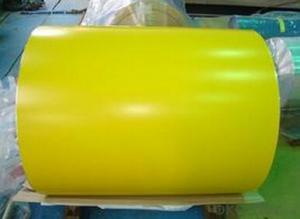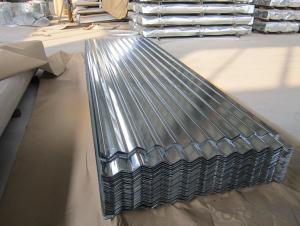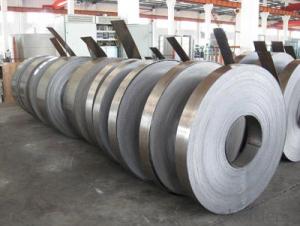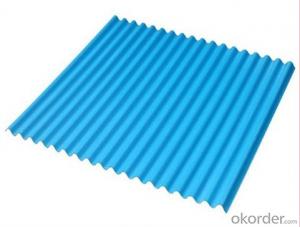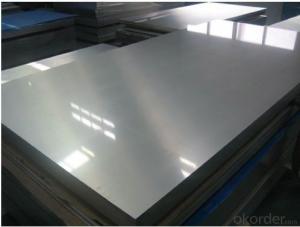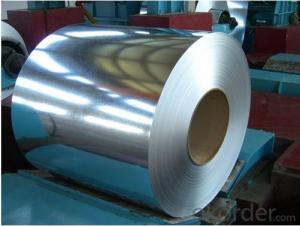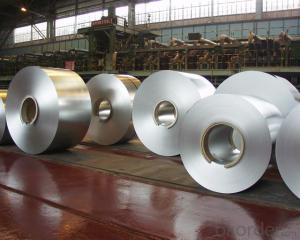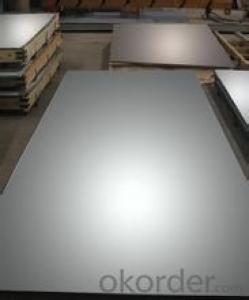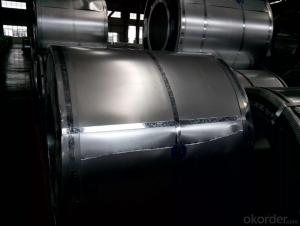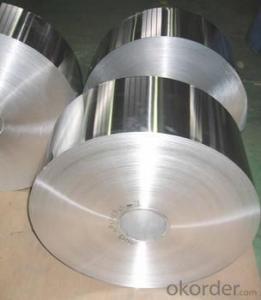Best Prepainted Galvanized steel Coil ASTM 615-009
- Loading Port:
- Tianjin
- Payment Terms:
- TT OR LC
- Min Order Qty:
- 111 kg/m²
- Supply Capability:
- 11 kg/m²/month
OKorder Service Pledge
OKorder Financial Service
You Might Also Like
1.Structure of Prepainted Galvanized steel Coil :
With Gi as base metal,after pretreatmet (degrease and chemical treatment) and liquid dope with several Layers of color,then after firing and cooling,finally the plate steel is called pre-painted galvanized steel ( PPGI) .Pre-painted galvanized steel is good capable of decoration ,molding,corrosion resistance lowering the cost of production and increasing the quality of the metal. Today, steel is one of the most common materials in the world, with more than 1.3 billion tons produced annually. It is a major component in buildings, infrastructure, tools, ships, automobiles, machines, appliances, and weapons. Modern steel is generally identified by various grades defined by assorted standards organizations.
2.Main Features of Prepainted Galvanized steel Coil:
• Excellent process capability
• Smooth and flat surface
• Workability, durability
• Excellent heat resistance performance
• High strength
• Good formability
• Good visual effect
3.Prepainted Galvanized steel Coil Images
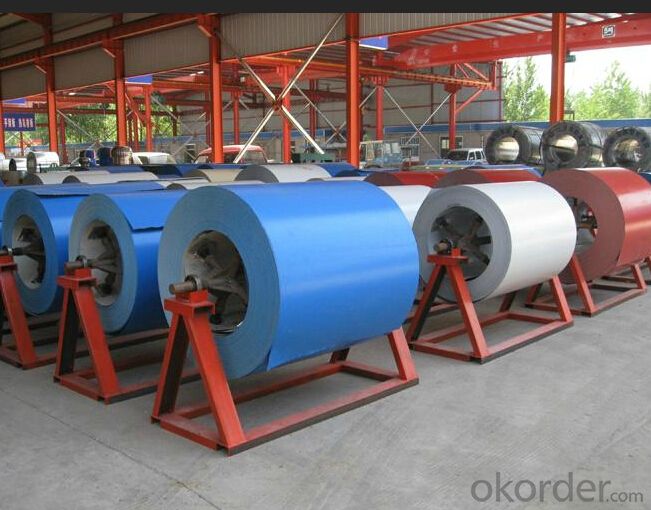
4.Prepainted Galvanized steel Coil Specification
Standard:ASTM, GB,JIS,JIS G3302 ASTM 755 EN10169
Grade: DX51D CGCC CS
Thickness: 0.13mm~3.0mm,
Width: 1250,600-1250mm
Coil weight:3-12 MT
Coil ID:508/610mm
Chemical composition:
C | Si | Mn | Cr | Ni | P | S |
0.150 | 0.476 | 11.231 | 12.50 | 0.900 | 0.039 | 0.010
|
5.FAQ of Prepainted Galvanized steel Coi
We have organized several common questions for our clients,may help you sincerely:
1.How do you control your quality
We have established the international advanced quality management system,every link from raw material to final product we have strict quality test;We resolutely put an end to unqualified products flowing into the market. At the same time, we will provide necessary follow-up service assurance.
2.how long we will receive the goods ?
After receiving your deposit or workable lc ,our normal shipment date is 15-20days,and it takes around 28 days to reach your port of destination. But is up to different destination
3. what is your moq
Normally our moq is 25per size ,but it is up to different size
- Q:How are steel strips used in the manufacturing of air conditioning systems?
- Steel strips are commonly used in the manufacturing of air conditioning systems for various purposes, such as forming the framework or casing of the units, creating channels for the flow of refrigerant, and providing structural support to important components. They are often shaped, cut, and welded to specific dimensions to fit the design requirements of the system, ensuring durability and efficient operation of the air conditioning units.
- Q:How are steel strips processed for engraving?
- Steel strips are processed for engraving through a series of steps that involve preparation, engraving, and finishing. Firstly, the steel strips are cleaned and degreased to remove any dirt or oil, ensuring a smooth surface for engraving. This is typically done using solvents or chemical cleaners. Once the strips are clean, they are usually coated with a layer of photoresist material. This photoresist acts as a protective barrier against the engraving process. The steel strips are then exposed to UV light through a pattern or template, which hardens the photoresist in specific areas. Next, the strips undergo the actual engraving process. This can be done using different techniques, such as chemical etching or laser engraving. In chemical etching, the steel strips are immersed in an etching solution that selectively removes the unprotected areas of the photoresist, exposing the steel underneath. On the other hand, laser engraving uses a focused laser beam to directly remove the photoresist and etch the steel. After the engraving is complete, the remaining photoresist is typically stripped off using a chemical solution or mechanical methods. This reveals the engraved design on the steel strips. Depending on the desired finish, the strips may undergo further treatments like polishing or coating to enhance the appearance and durability of the engraving. Overall, the process of engraving steel strips involves cleaning, coating with photoresist, exposing to UV light, engraving, removing the photoresist, and applying finishing touches. This ensures precise and detailed engravings on the steel strips, making them suitable for various applications such as decorative items, industrial marking, or identification tags.
- Q:How do steel strips handle high-impact applications?
- Steel strips are highly durable and have excellent strength, making them well-suited for high-impact applications. They can effectively absorb and redistribute the energy generated from impacts, minimizing any potential damage or deformation. Additionally, steel strips are typically resistant to bending and breaking, allowing them to withstand intense forces without compromising their structural integrity.
- Q:How are steel strips polished?
- Steel strips are typically polished using a series of mechanical processes to achieve a smooth and reflective surface. The process begins by cleaning the steel strip to remove any dirt, oil, or other contaminants. This is usually done by using a degreasing agent or solvent. Once cleaned, the steel strip is usually passed through a series of rotating abrasive belts or wheels. These belts or wheels are made of a material such as emery, silicon carbide, or diamond, which is harder than steel. As the strip moves through the machine, the abrasive material removes a thin layer of metal from the surface, gradually smoothing out imperfections and creating a more even surface. After the initial rough polishing, the steel strip may undergo additional polishing steps to further refine the surface. This can involve using finer abrasives or polishing compounds to achieve a higher level of smoothness and shine. In some cases, a process called electropolishing may be used. Electropolishing involves immersing the steel strip in an electrolyte solution and applying an electric current to it. This causes the surface to dissolve and smoothen, resulting in a highly polished finish. Overall, the polishing of steel strips involves a combination of mechanical abrasion and chemical processes to remove imperfections and create a smooth, reflective surface. The specific methods used may vary depending on the desired finish and the requirements of the application.
- Q:What are the different surface cleaning methods for steel strips?
- There are several surface cleaning methods for steel strips, including mechanical cleaning, chemical cleaning, and electrolytic cleaning. Mechanical cleaning involves the use of abrasive materials or tools to physically remove dirt, rust, or other contaminants from the steel surface. Chemical cleaning involves the application of chemicals or solvents to dissolve or remove surface contaminants. Electrolytic cleaning utilizes an electric current to remove oxides or other impurities from the steel surface. Each method has its own benefits and limitations, and the choice of cleaning method may depend on factors such as the type and severity of contamination, the desired level of cleanliness, and the specific requirements of the steel strip application.
- Q:What are the main challenges in handling and storing steel strips?
- The main challenges in handling and storing steel strips include ensuring proper protection against corrosion, preventing damage or deformation during transportation and storage, maintaining appropriate temperature and humidity levels to prevent rusting, and managing the weight and size of the steel strips to ensure safe handling and stacking.
- Q:What is the difference between hot rolling and cold rolling of steel strips?
- The main difference between hot rolling and cold rolling of steel strips lies in the temperature at which the process takes place and the subsequent effects on the material. Hot rolling involves heating the steel strips at extremely high temperatures, typically above the recrystallization temperature of the metal. This softens the steel and makes it more malleable, allowing it to be easily shaped and formed into various products. The heated steel is then passed through a series of rollers to reduce its thickness and achieve the desired dimensions. Hot rolling results in a smoother surface finish and less residual stress in the steel, making it suitable for applications that require a higher strength or ductility. On the other hand, cold rolling is performed at room temperature or slightly below it, without heating the steel strips. This process involves passing the steel through a series of rollers that gradually reduce its thickness. Cold rolling not only refines the grain structure of the steel but also increases its hardness and strength. Additionally, cold rolling improves the surface finish of the steel, making it suitable for applications where a smooth and polished appearance is desired. In summary, hot rolling is carried out at high temperatures to achieve better formability and shape the steel, while cold rolling is performed at room temperature to enhance the mechanical properties and surface finish of the steel. The choice between hot rolling and cold rolling depends on the specific requirements of the end product and the desired characteristics of the steel.
- Q:How are steel strips used in the production of hand tools?
- Due to their durability and versatility, steel strips find wide application in the manufacturing of hand tools. These strips are typically made from high-quality steel alloys, which offer exceptional strength and wear resistance. In the production process, steel strips are initially cut into desired dimensions and then undergo various forming operations such as bending, stamping, or rolling. This allows the strips to take on the specific shapes required for hand tool components, including blades, handles, or shafts. The flexibility of steel strips enables the production of a diverse range of tool designs to meet varied application needs. Once the components are shaped, they undergo further processing through heat treatment, which enhances their hardness and toughness. This treatment ensures that the hand tools can endure significant force, impact, and wear during use, making them highly durable and long-lasting. Steel strips are also utilized in the production of hand tool accessories, such as springs, clips, or fasteners. These components play crucial roles in enhancing the functionality and usability of the tools. For example, springs made from steel strips provide the necessary tension or pressure required for certain hand tools, like pliers or clamps. Furthermore, steel strips can be coated or plated with protective finishes, such as chrome or nickel, to enhance their corrosion resistance and improve the overall aesthetics of the hand tools. This added layer of protection ensures that the tools remain in good condition even in challenging working environments. In summary, steel strips are indispensable in the production of hand tools as they provide the necessary strength, durability, and versatility for various applications. From blades to handles, these strips enable the creation of high-quality tools that can withstand rigorous use and deliver exceptional performance.
- Q:Can steel strips be used in the production of wire and cable?
- Yes, steel strips can be used in the production of wire and cable. They are commonly used as a core material to provide strength and stability to the wire or cable, especially in applications where flexibility and durability are required. The steel strips are typically coated or insulated to prevent corrosion and ensure optimum performance.
- Q:How are steel strips processed for assembling?
- Steel strips are processed for assembling through a series of steps to ensure they are ready for use in various applications. Firstly, the steel strips are cleaned to remove any impurities or rust that may be present on the surface. This is usually done through a process called pickling, where the strips are immersed in an acid solution to remove the oxide layer. After cleaning, the steel strips are then annealed to improve their ductility and reduce any residual stresses. Annealing involves heating the strips to a specific temperature and then slowly cooling them down. This process helps to make the steel more malleable and easier to work with during assembly. Once the steel strips are annealed, they may undergo further processing such as slitting or cutting to achieve the desired width and length. Slitting involves cutting the strips into narrower widths, while cutting is used to achieve specific lengths. Both processes are done using specialized machinery to ensure precision and accuracy. After slitting or cutting, the steel strips may undergo additional treatments such as edge trimming or surface coating. Edge trimming removes any burrs or sharp edges that may have been created during slitting or cutting. Surface coating, on the other hand, involves applying a protective layer to prevent corrosion or enhance the aesthetic appearance of the steel strips. Finally, the processed steel strips are ready for assembling. They can be formed into various shapes and sizes using techniques like bending, stamping, or welding. These assembly processes allow the steel strips to be used in a wide range of applications, such as construction, automotive manufacturing, or industrial machinery. Overall, the processing of steel strips for assembling involves cleaning, annealing, slitting or cutting, edge trimming, surface coating, and finally, forming the strips into the desired shapes. This ensures that the steel strips are of high quality and ready for use in various industries.
1. Manufacturer Overview |
|
|---|---|
| Location | |
| Year Established | |
| Annual Output Value | |
| Main Markets | |
| Company Certifications | |
2. Manufacturer Certificates |
|
|---|---|
| a) Certification Name | |
| Range | |
| Reference | |
| Validity Period | |
3. Manufacturer Capability |
|
|---|---|
| a)Trade Capacity | |
| Nearest Port | |
| Export Percentage | |
| No.of Employees in Trade Department | |
| Language Spoken: | |
| b)Factory Information | |
| Factory Size: | |
| No. of Production Lines | |
| Contract Manufacturing | |
| Product Price Range | |
Send your message to us
Best Prepainted Galvanized steel Coil ASTM 615-009
- Loading Port:
- Tianjin
- Payment Terms:
- TT OR LC
- Min Order Qty:
- 111 kg/m²
- Supply Capability:
- 11 kg/m²/month
OKorder Service Pledge
OKorder Financial Service
Similar products
New products
Hot products
Hot Searches
Related keywords
